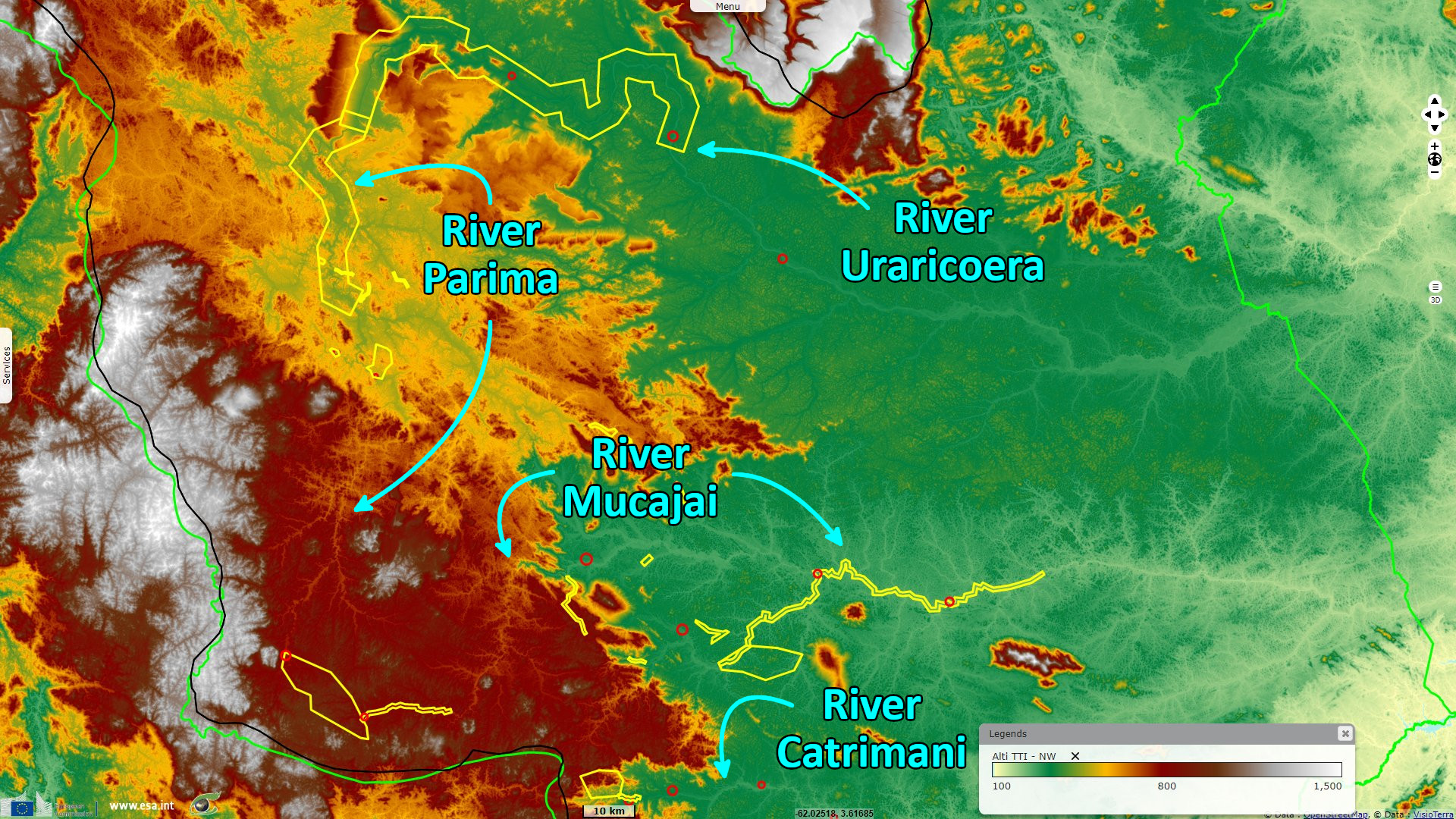The new Brazilian government supports the Yanomami people victim of 20 000 illegal gold miners
Sentinel-2 MSI acquired on 06 December 2015 at 14:37:32 UTC
...
Sentinel-1 CSAR IW acquired on 01 March 2023 from 10:11:17 to 10:11:46 UTC
...
Sentinel-1 CSAR IW acquired on 01 March 2023 from 10:11:17 to 10:11:46 UTC
Keyword(s): Land, natural resources, pollution, geology, water quality, deforestation, National Park, Amazon rainforest
The British journalist Dom Phillips of the Guardian and the Indigenous specialist Bruno Pereira murdered last June while the investigated illegal degradation of the environment, armed violences and deep humanitarian issues caused by illegal miners in Yanomami territory, in northern Brazil.
The Guardian did not abandon the topic, as proves the article written by Tom Phillips on 8 February of this year which shows the government of president Luiz Inácio Lula da Silva trying to revert the policy of his predecessor: "The Brazilian government has launched its campaign to drive tens of thousands of illegal miners from the country’s largest Indigenous reserve, with special-forces environmental operatives destroying aircraft and seizing weapons and boats during an operation deep in the Amazon’s Yanomami territory."
The group’s agents gathered early last Friday at a camp on the Uraricoera River – one of the main arteries miners use to invade the territory, which is the size of Portugal and where about 30,000 Yanomami live in more than 300 villages.
Indigenous activist Sônia Guajajara, now Brazil’s first ever minister for Indigenous peoples, "said the new government of leftist president Luiz Inácio Lula da Silva was determined to protect the nearly 30,000 Yanomami people living in Brazil from what authorities have called a 'genocide'."
Since Wednesday, February 1, the airspace of the Indigenous Yanomami territory has been closed to all aviation and the rivers have been controlled by the navy with the objective to suffocate the supply of the gold miners. "Members of Brazil’s environmental protection agency Ibama – with support from the Indigenous agency Funai and the newly created ministry for Indigenous peoples – launched the long-awaited operation, with troops establishing a base along the Uraricoera river. Wildcat tin ore and gold miners use the waterway – as well as dozens of illegal airstrips – to reach and supply their illegal outposts in Yanomami lands."
"In a statement on Wednesday lunchtime, Brazil’s government said the environmental squad had destroyed a helicopter, an airplane and a bulldozer used by mining mafias to drive clandestine roads through the region’s jungles. Footage of the raid showed the chassis of a helicopter smoldering near a patch of rainforest after it was torched by Ibama agents in order to prevent it being used again."
"Illegal goldminers known as garimpeiros began pouring on to Yanomami lands in the 1970s and 80s, after the 1964-85 military dictatorship urged impoverished Brazilians to populate a region they claimed foreign powers sought to seize."
"A global outcry – which included Prince Charles condemning the 'collective genocide' of the Yanomami – prompted government action. Tens of thousands of miners were removed from Yanomami lands in the early 1990s during a security operation called Selva Livre (Jungle Liberation). Brazil’s then president, Fernando Collor de Mello, created a supposedly protected 9.6m-hectare territory for the Yanomami which exists to this day."
"Dozens of Yanomami children have been flown to hospitals in Boa Vista suffering from malnutrition and malaria in recent days, with horrifying photographs of emaciated children and adults causing indignation in Brazil and internationally. At least 570 Yanomami children are reported to have died of curable diseases during Bolsonaro’s administration.", concludes the article published by Tom Phillips for the Guardian.
This comes on top of agriculture-led deforestation and tens of thousands of monthly wildfires in the Amazon forest during the summer, 'in August 2022, more than 33 000 fires were recorded, the highest number since 2010 [and] almost 17 000 fires were recorded at the beginning of September, in just one week', recalled Greenpeace in a France 24 article.













